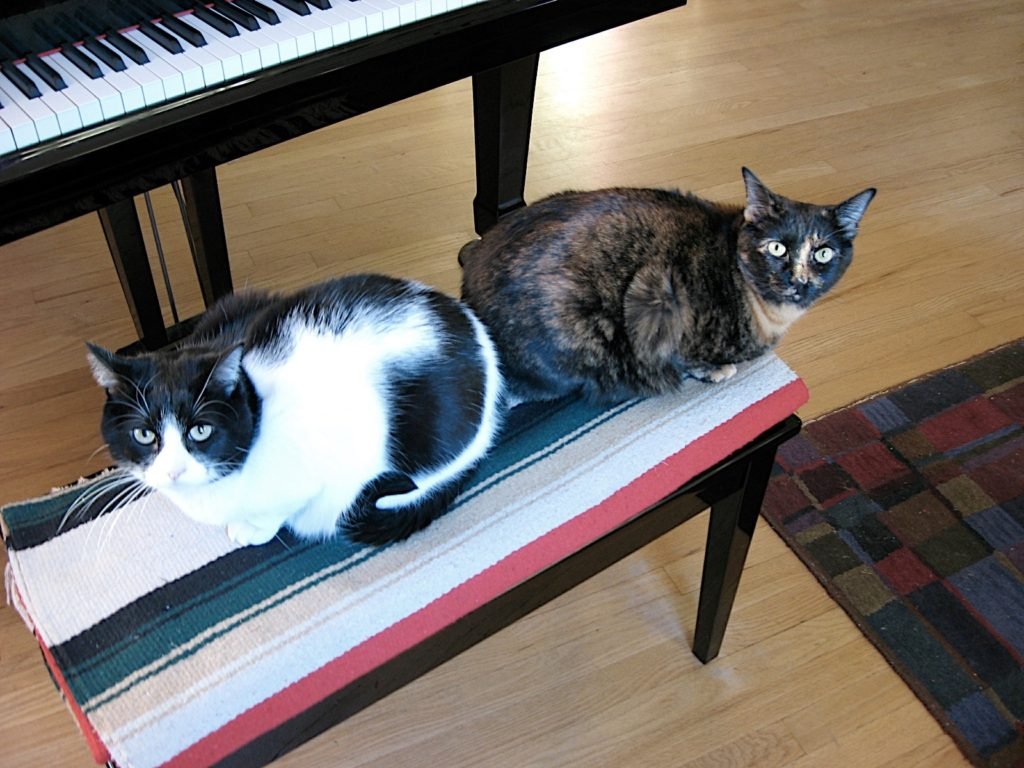Cat Hunt!
“Cat hunt!” screamed our six-year-old nephew Felix every time he ran up the driveway this summer, much to our felines’ dismay. The cats got very good at this forced game of Hide and Seek. After all, they could hear the kid coming. Felix, however, was better.
Little five-year-old Teddy, too, loves a cat hunt. I have discovered that if I do not make every second of his piano lesson engaging and interesting, then he is off on a cat hunt. Yesterday I turned my back for one second in order to make a note in his practice book, and he was gone. I could hear him giggling in the sunroom, and saw the tail of a cat vanishing around the corner. Another small child is so enamored with the cats that if one happens to wander through the room during a lesson, all musical attention is gone for the day. I have taken to locking the cats in the basement during the Little Ones’ lessons, not to protect them, but to protect myself. I’m tired of chasing children.
No doubt about it. It is the Little Ones who teach me how to teach. The students playing Beethoven sonatas and Chopin scherzos may sharpen my musical skills, but they do nothing to challenge my pedagogical ones. It is the squirmy five year old that forces me to make doubly and triply sure I don’t miss a step in the pedagogical sequence. If I lose my way, skipping randomly across musical concepts, they will wiggle restlessly, not bothering to hide their boredom. Really, it is amazing how quickly the Little Ones can literally and figuratively disappear right before my very eyes.
What saves us all from the temptation to go hunt down a cat is to keep the tasks in these earliest piano lessons very tactile and tangible. Hold up your right hand. What finger number is this? Play all the “Cats” on the piano. Let’s pass that red ball while we sing “Twinkle.” Clap this pattern. Find Middle C. High C. Low C.
Of course, early piano lessons also mean a lot of rote pieces. In March, an interview I did with a charming Australian piano teacher, Tim Topham, was broadcast on his podcast about creative piano teaching. Last week, I heard that the interview made his 100th Episode Special: Favorite Conversations From the Last 2 Years. I’m honored have made his short list, but more than that, I know that rote pieces and rote teaching save many a beginner piano lesson, not to mention provide a respite for my cats, tired of being found.
Around here, our newest class of Little Ones is playing a lot of “Desert Rose” and “Green Frogs” and “Oh Purple Sage. ” We count their rote tunes, watching their repertoire list build right before our very eyes. We count whole notes and practice days. We count cats. It’s all good, and a concrete and tangible way to ground us in this new school year, spinning out before us.
